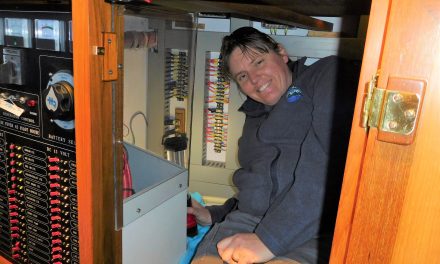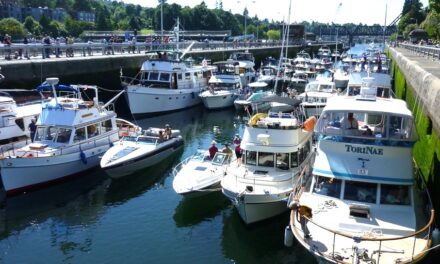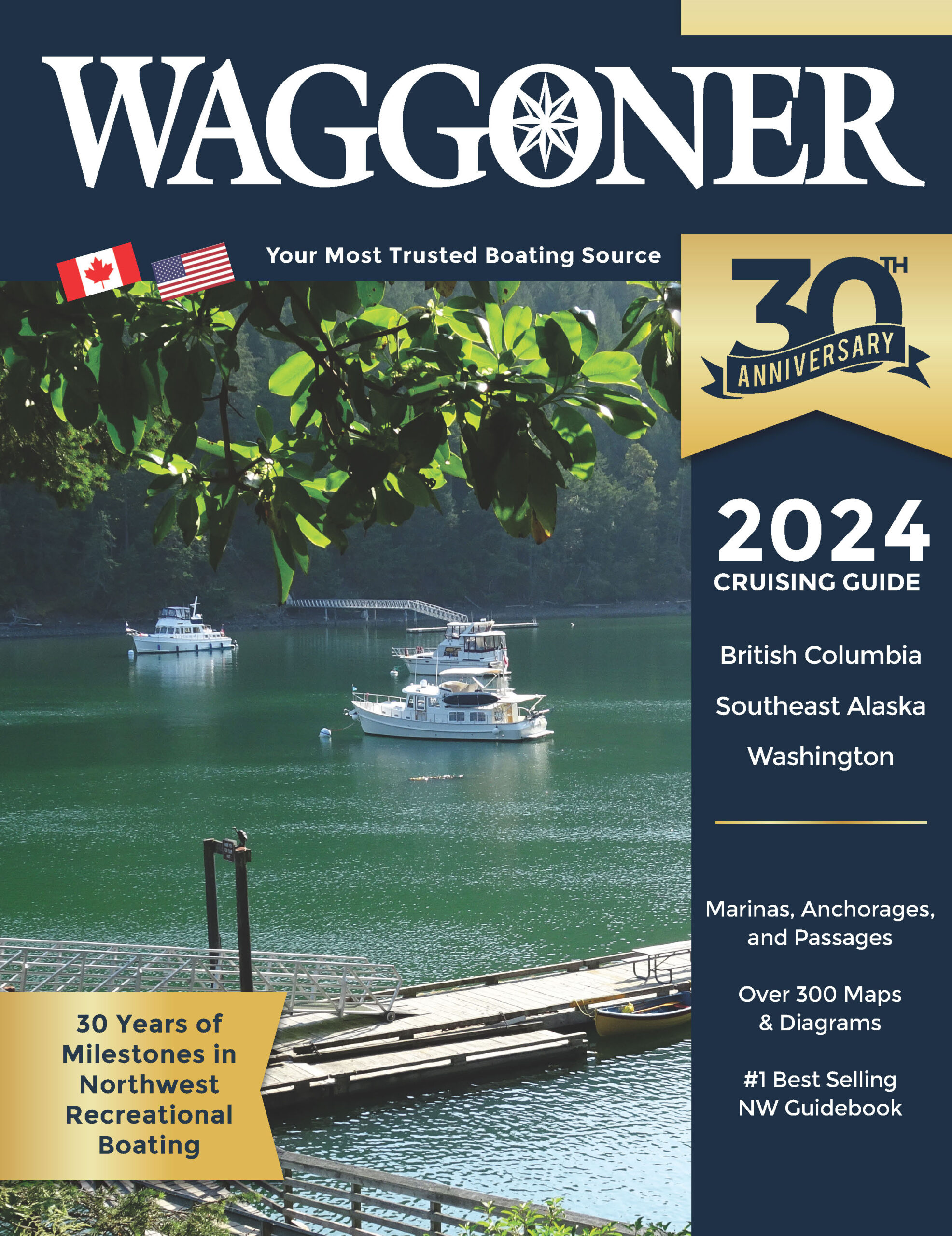A Little Bit About Kenmore Air
Kenmore Air is the top floatplane company in the world. They have been a major company in this business since 1946. For many of us, we see their floatplanes delivering friends and family to marinas as far north as Port McNeill and Sullivan Bay and many places in between. If you have ever had the pleasure of a Kenmore Air flight, you know it is magic to fly over our boating areas. Often at just 1500-2000 feet elevation, you look out at our beautiful islands and occasionally a whale or two. In addition to being one of the top floatplane service companies in the world, they also repair and rebuild the classic deHavilland Beavers and Otters, and have invented many modifications that make these venerable aircraft better than when they were first manufactured (some up to 60 years ago).
Kenmore Air Flight Instruction
Kenmore Air also offers flight instruction where you can learn to fly floatplanes and earn a floatplane pilots license. To plant the hook and get you started they offer an introductory flight. The qualifications are simple. You don’t need a pilot’s license, and you need to be over 15 years old.
Your editors at the Waggoner Cruising Guide had to do this as a “review” for our Waggoner Guide readers, well at least Mark and Leonard did, Lorena handled the ground/water photography duties.
Full Disclosure: Mark and Leonard have thousands of hours of flying time in their own aircraft over the last 40 years but are no longer active pilots.


The Kenmore Air Floatplane Lesson Experience
So what is it like flying a floatplane? It is one of the biggest thrills you can have! The program includes a book “How to Fly Floats” to get you even more excited and to give you a background on the basics. When the day of our flight arrived, we started with our instructor presenting a 1-hour ground school session explaining how to read the wind and stepping through the basics of flight using floats for take-off and landing. Then it was out to the aircraft, a two-seat stick and rudder, 180hp Super Cub. Quickly, you begin to understand the challenges of working on the water when you have to do the pre-flight inspection scrambling over the floats to get around the aircraft bobbing in the water next to the dock. One slip and you are swimming.
Next, it is time to get into the aircraft. A full grown adult does not sit in a Super Cub – you wear it! We reviewed the controls, and soon the instructor got out on the floats and turned the aircraft into the wind.
Naturally, the engine coughed a few times for me leading up to a few anxious moments working to start the engine. The newbie student has to work some of the controls the instructor does not have access to from his seat behind the student. Through the intercom headsets, he talks you through the sequence and soon we were taxing out of the Kenmore Air Harbor base into Lake Washington. Once into the takeoff zone, you check for traffic, turn the aircraft into the wind and advance the throttle. The Super Cub on floats quickly gains speed and the little chop we had assisted the takeoff transitioning from the step when the floats are skimming through the water to almost hopping into the air.
A little back pressure on the stick and you are flying. I flew the plane, and the instructor followed through on the controls, coaching all the way. The world looks fantastic when you are 1000 feet in the air and controlling the plane.
Lessons in Flight
We had a windy afternoon, and the instructor showed how to read the direction of the wind based on the pattern on the water. We flew over to Sand Point to find an area to land in the lee of the shore where the water was the calmest and still facing into the wind. It was not calm that day, and the first lesson demonstrated when to abort a landing in rough chop. We circled and set up for another landing, this time catching it just right between waves. We made the first landing on the rough water and then taxied and bounced in the rough water back to a point for takeoff. Once it looked good, I advanced the throttle, and with a few bounces, we were up in the air and climbing.
This went on for four takeoffs and landing to the point where I felt with just a little more practice – I could do this! The hook was planted and there was a silly smile plastered on my face.
Soon, it was time to taxi back to the dock. We have all watched the skilled Kenmore Air pilots when they shut down their engine and coast to the dock. We see them skillfully jump out on the float to tie the still coasting aircraft up to a cleat on the dock. Timing is everything. Only the student in the front seat of the Super Cub has the engine controls, and the instructor tells you when to reach down and cut the engine, too late, and you end up crunching an expensive float into the dock. Too soon and you end up floating 10 feet away from the dock, and you have to go through an embarrassing engine restart and circle around for another approach to the dock. We made it just right and got the Super Cub tied up to the dock with no damage. What fun!
Floatplane Certification
What’s next? Adding a floatplane certification to my pilot’s license has been a goal since I was a kid. The challenge is once you have the license there aren’t any places in this area that rent a floatplane. In short, we need to find a couple of Waggoner Guide readers interested in the shared purchase of a floatplane, and they are not cheap. Let’s see, boat or floatplane, floatplane or boat? Right now Leonard and I are fanaticizing about how fast we could visit marinas up and down the coast doing our research work for the Waggoner Cruising Guide if we had a floatplane.
If you get a chance take this introductory floatplane lesson – do it. At $99 it is a bargain.
For more information about the Introductory Floatplane Lesson go to http://www.kenmoreairharbor.com/intro-flight.html. Tell them the Waggoner Cruising Guide sent you.










